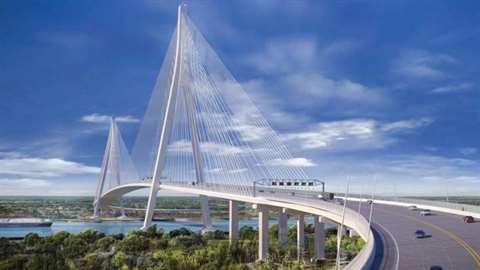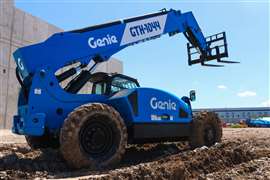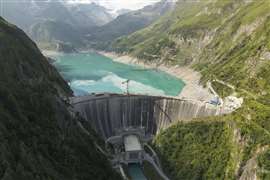Fluor’s rising construction costs leads to schedule relief talks with clients
21 February 2023
US-based Fluor has entered cost and schedule relief talks with clients on some of its biggest construction projects after rising costs hit its bottom line.
 The Gordie Howe International Bridge (Image courtesy of Windsor-Detroit Bridge Authority)
The Gordie Howe International Bridge (Image courtesy of Windsor-Detroit Bridge Authority)
Fluor’s ‘Urban Solutions’ division, which incorporates its mining and construction operations, saw profit drop to US$3 million in 2022, compared to $38 million in 2021. Revenue in 2022 dipped to $3.9 billion in 2022, compared to $4.4 billion in 2021.
While the decline in revenue was primarily due to the completion of three large mining projects, the division also faced additional charges in its urban construction operations, which hit profits.
They included a $175 million charge for rework and schedule delays on the I-635 East Freeway project, and cost growth and delay mitigation costs on the $4.4 billion Gordie Howe International Bridge between Detroit and Windsor, Ontario, Canada.
Fluor also saw costs grow on its Los Angeles International Airport (LAX) Automated People Mover (APM) project. The APM electric train system broke ground in March 2019. It will run on a 2.25-mile elevated track connecting six stations.
Fluor said it was now in discussions over cost and schedule relief on the Gordie Howe project, as well as a discussion with clients about schedule relief on the I-635 LBJ East Freeway and the LAX APM.
‘Foundations for growth’
Fluor Corporation as a whole saw its revenue in 2022 decline, although it pointed to increased profits and a growing order book.
Revenue for 2022 was $13.7 billion, down from $14.2 billion the year before. But consolidated segment profit for the year was $427 million, which represented an increase on the $415 million profit it made in 2021.
Meanwhile, full-year new awards for Fluor totalled $19.8 billion – almost double the $10 billion of awards it clocked up in 2021. At the end of 2022, its work backlog was $26 billion, compared to $20.8 billion in the prior year.
The business said it had set the foundations to “deliver significant results” over the coming years. It has shifted its strategy since January 2021 by attempting to grow markets outside of the traditional oil and gas sector, including energy transition, advanced technology and life sciences, infrastructure and nuclear and civil, defence, and high-demand metals.
It offered adjusted guidance on its earnings before interest, tax, depreciation and amortisation (EBITDA) of $450-600 million in 2023, and $800-950 million in 2026.
STAY CONNECTED


Receive the information you need when you need it through our world-leading magazines, newsletters and daily briefings.
CONNECT WITH THE TEAM











